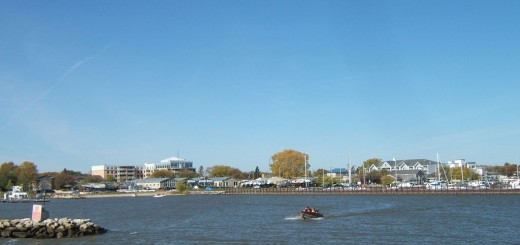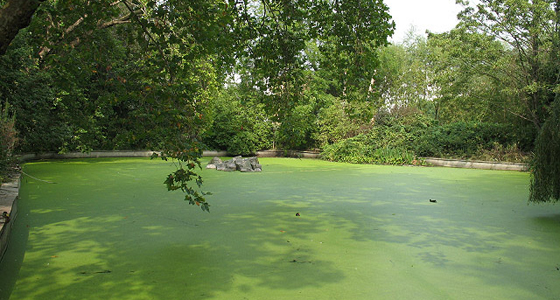Iron Fights Algal Blooms
0Numerous methods have been put forth to tackle the persistent problem of toxic algal blooms around the world. And a lot of those focus on the source of the issue, seen typically as nutrient-rich runoff fed by the application of fertilizers. But there is more than one way to come at the issue.
For example, researchers at the University of Alberta have found that applying iron to lake water can help to lock phosphorus away in sediments to keep it from feeding blooms. The find was made on Nakamun Lake, a small prairie lake near Edmonton known to have a recurring problem with microcystis.

Lake in Alberta, Canada. (Credit: Flickr User davebloggs007 via Creative Commons 2.0)
Scientists used 15 mesocosms to separate out different parts of the lake for applications of iron in the form of ferric chloride. Each was about 2 meters in diameter and 6 meters in depth. Water quality was tested before and after the substance was added to each mesocosm, and researchers recorded the effects that varying treatment quantities had.
For those mesocosms that received only small amounts of iron, the algae-dropping impacts weren’t that great. But as more and more was added, researchers began to see a linear relationship between ferric chloride added and decreases in algae.

Infographic on how adding iron to lake sediments can reduce toxic algal blooms. (Credit: Diane M. Orihel, David W. Schindler, Nathaniel C. Ballard, Lindsey R. Wilson and Rolf D. Vinebrooke. Experimental iron amendment suppresses toxic cyanobacteria in a hypereutrophic lake. Ecological Applications, in press.)
It became clear that the iron was binding with phosphorus in the water and preventing it from feeding blooms. In addition, scientists recorded reductions in total algae biomass as well as that of potentially toxic cyanobacteria.
And though the results are promising, researchers note that adding iron to lakes isn’t a silver-bullet solution. Using the method should be done in conjunction with other treatment approaches and improved management practices, like installing better sewage treatment, fixing leaking septic tanks, and restoring wetlands and riparian areas.
The idea for testing iron as a treatment for algal blooms was inspired by Lake 227 in Canada’s Experimental Lakes Area that has a naturally high concentration of dissolved iron. Though phosphorus has been continually added to that lake since the 1960s, it has been essentially sequestered in the water body’s sediments.
Full results of the study are published in the journal Ecological Applications.
Are there any possible side effects to using iron to fight algal blooms? What methods used alongside it could be most effective? Please consider leaving a comment to share your thoughts!












